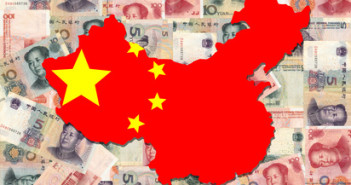Towards a regime change in China, the economic giant is slowing. To counter the slowdown, several Chinese provinces introduced new and huge projects. However, many of these statements seem to contain nothing new, but are just a repetition of old programs.
The Chinese slowdown is affected by Europe, but also affects Europe and is a result of excessive activity in the past. The headlines from China have a strong impact on the Aussie, but also other currencies feel changes in the world’s No. 2 economy.
Chinese PM Wen Jiabao promised more stimulus to combat the weakening economy. As aforementioned, some announcements are really news, and Chinese stimulus has a few hurdles:
- China cannot use its vast foreign reserves for stimulus plans.
- Manufacturing slowdown: The official PMI returned to contraction zone, and the unofficial HSBC / Markit figure fell to deeper lows within the contraction territory. Also looking further out to the future, to investments, shows a worrying picture: Foreign Direct Investment fell by 8.7% in July, year to date: 3.6%.
- Hard to find the balance: Manufacturing weakness is seen in many indicators, but housing may be on the rise once again. This is actually a burden that could limit stimulus which could encourage an even bigger housing bubble. In the recent past, China tried to curb house prices, but it hurt the industry as well. It is now trying to loosen.
- Food prices: The rise in food prices is a problem for China – both economic and political.
- Stockpiling: Coal stocks have soared by 48% over the past year and are now at a 4yr high.
- Stimulus could focus on technology and consumption rather than infrastructure. Construction is 12% of GDP, more than 10% that Japan had at the peak, and similar to levels seen in Spain. Squeezing this sector without having shock waves means that technology and consumption development need to speed up. They have been slow so far.
Not all is bad in China: the economy is still growing at a plausible pace and the leadership can manage to steer the ship as it did in the past.
In addition, China still competitive: prices of Chinese goods imported to the US rose by only 5% in the past 7 years, despite the currency strengthening by 30%.
We could see China introduce new monetary easing measures during September: these could include rate cuts, RRR cuts and also a weakening of the Chinese yuan.
In the wake of the financial crisis of 2008, many migrant workers lost their jobs and left China. Watching migrant workers movements in China could indicate strength or weakness of economy in the future.
This is an adapted version of this topic from the forex monthly outlook. You can download the full report by joining the mailing list below.
